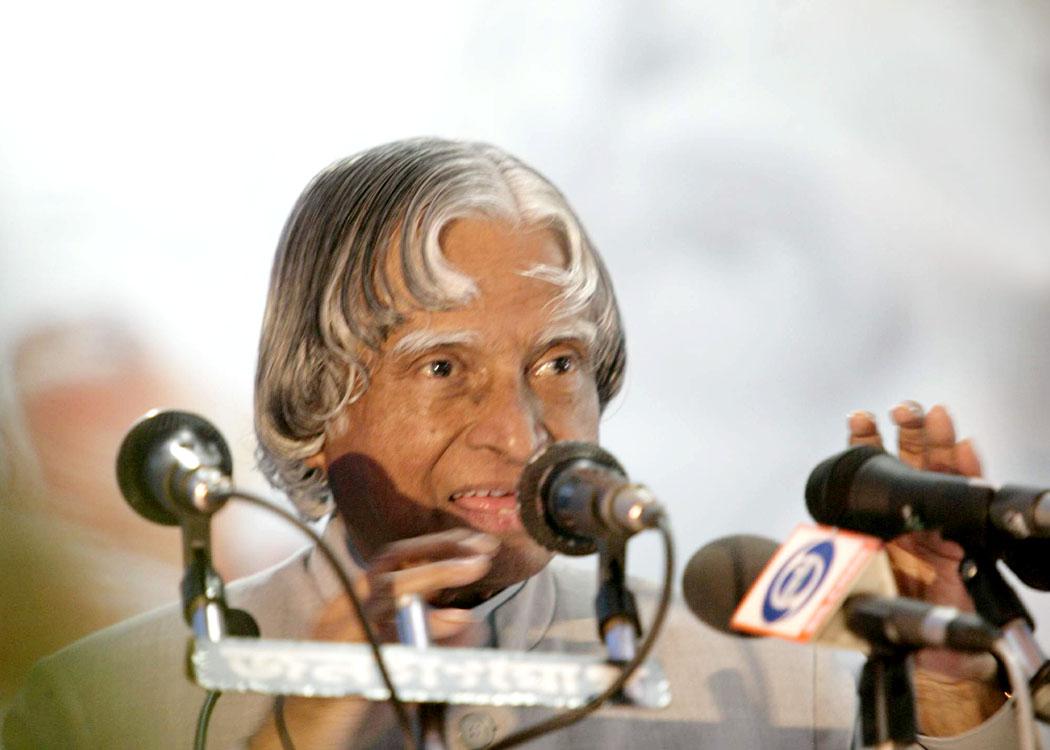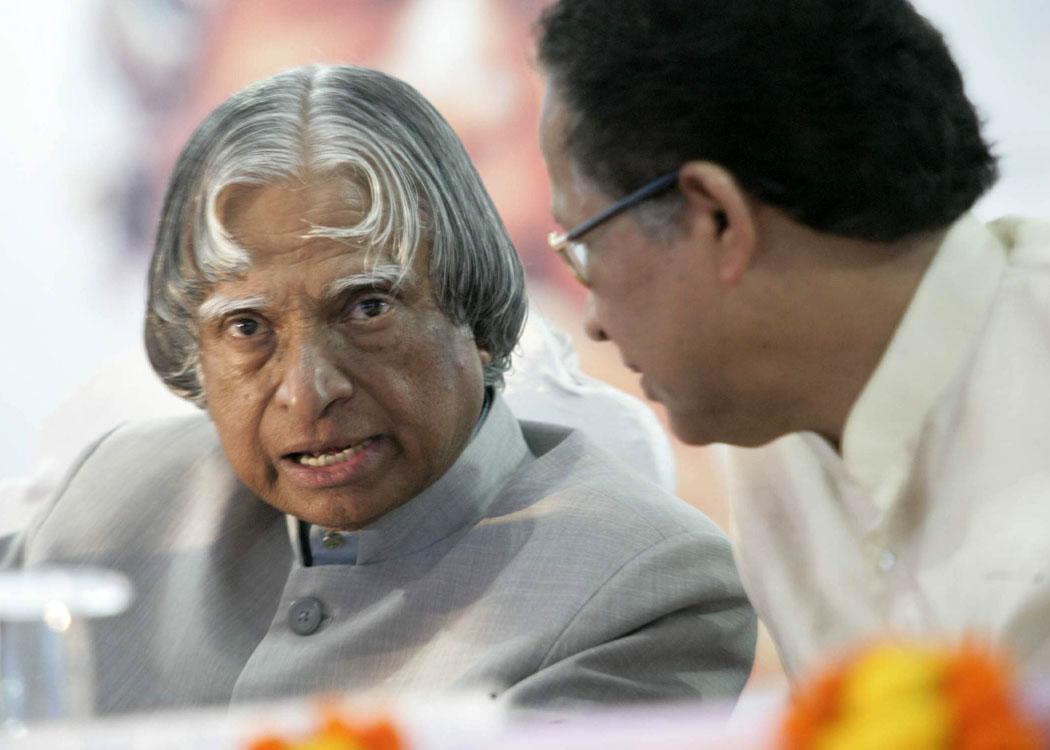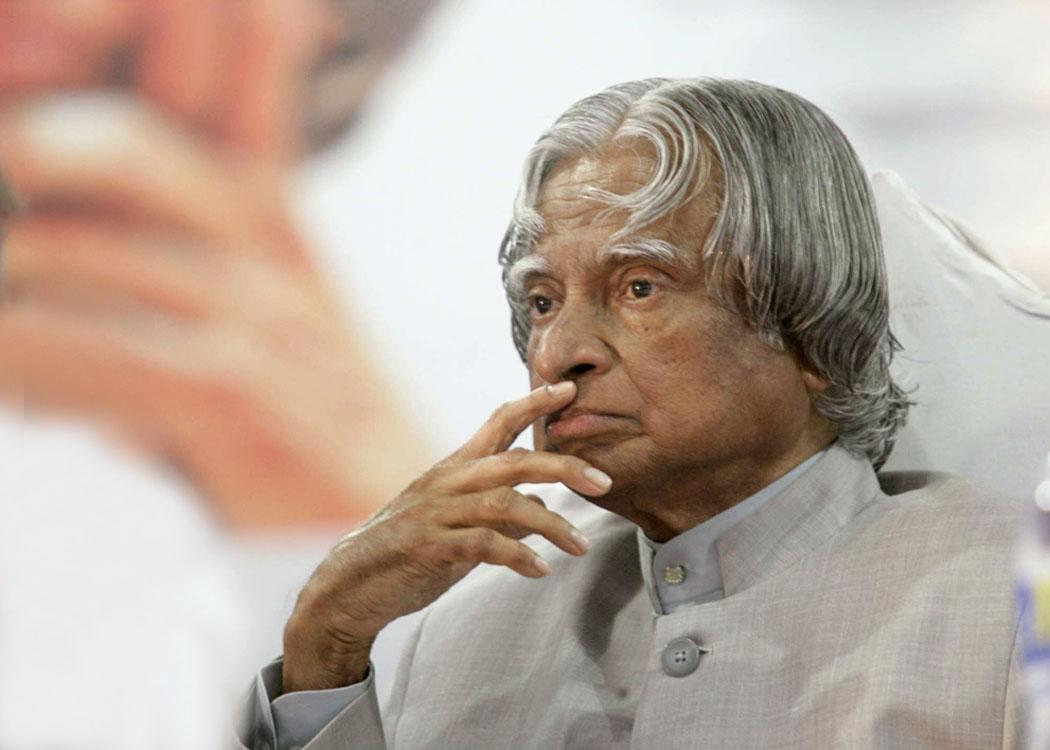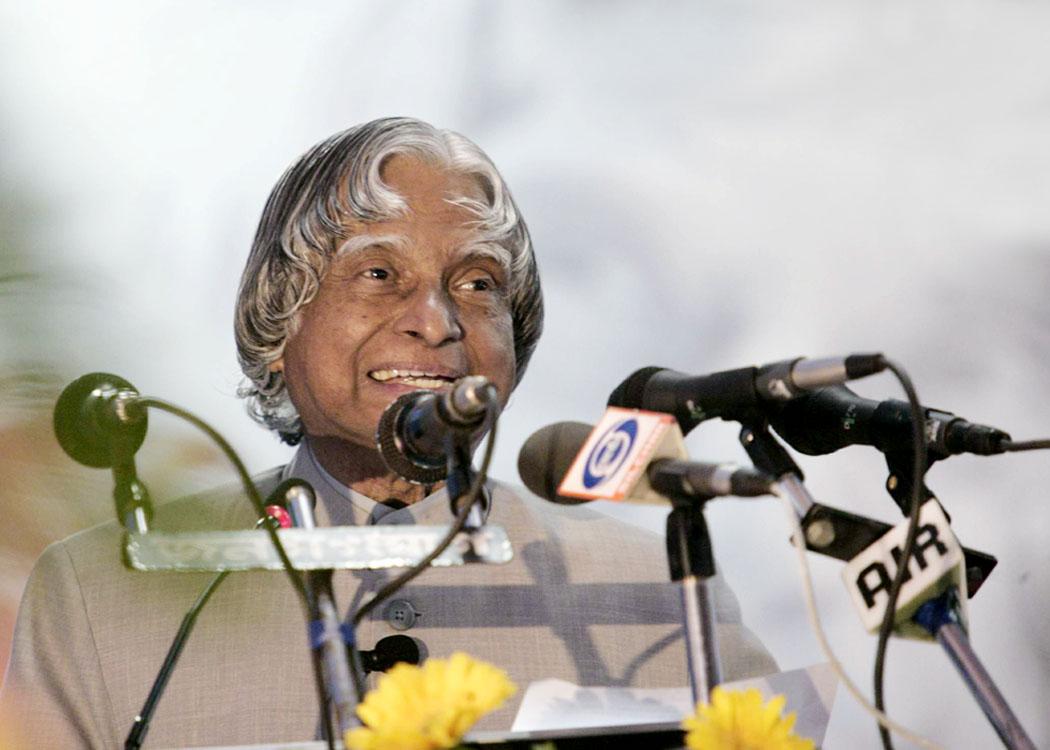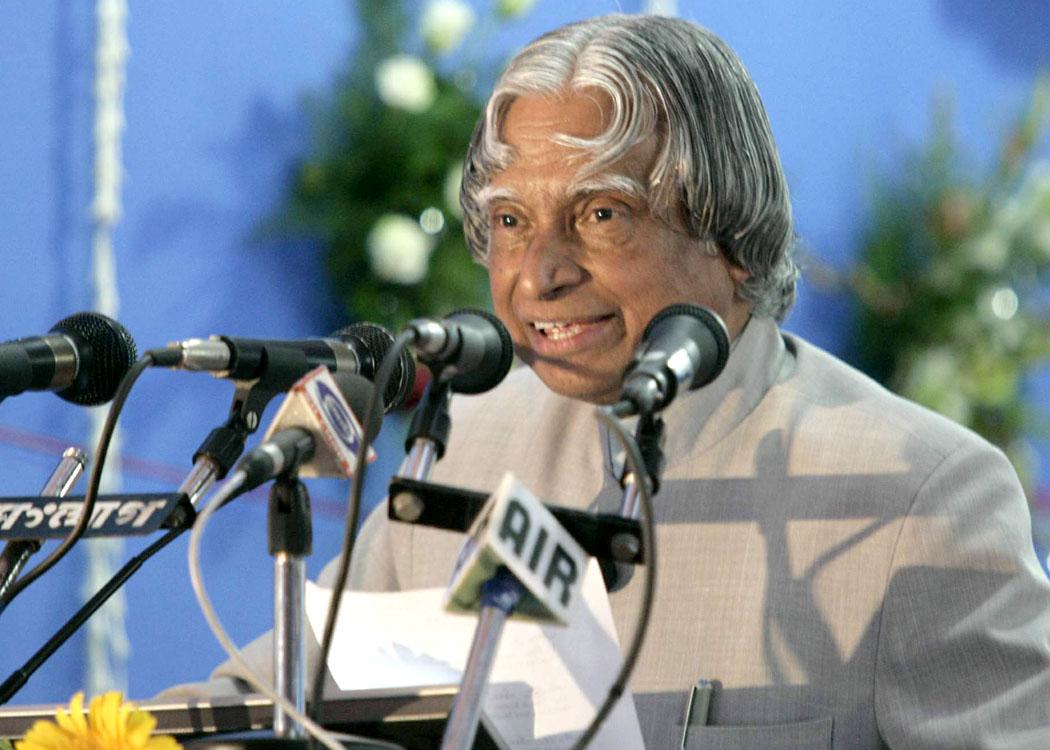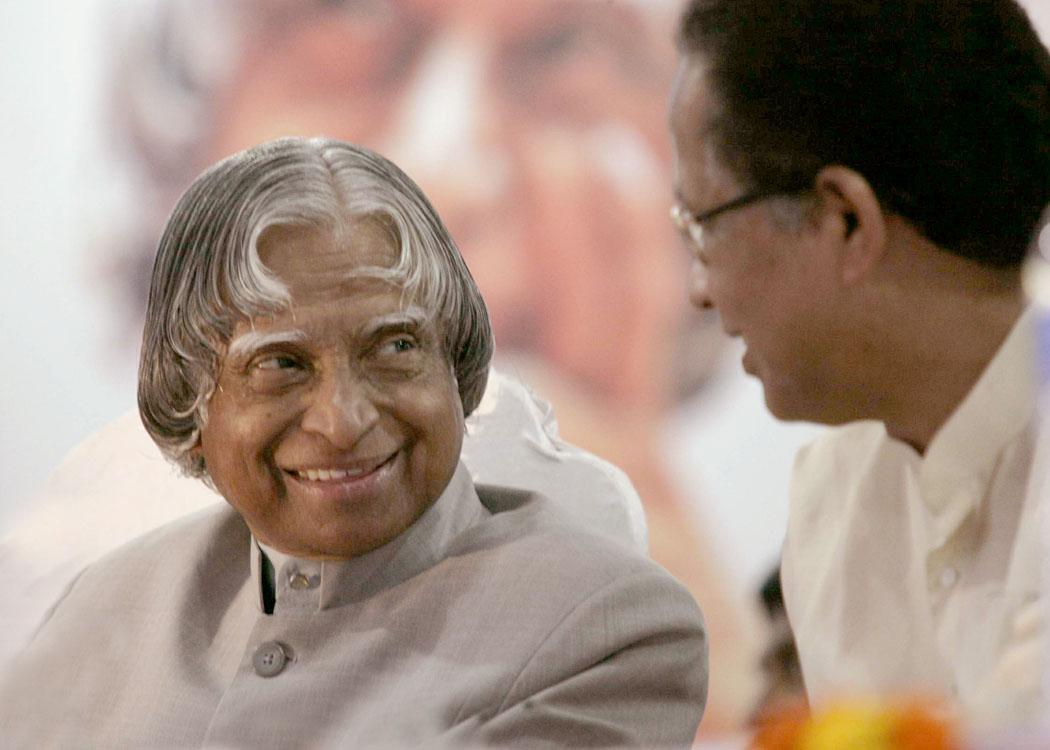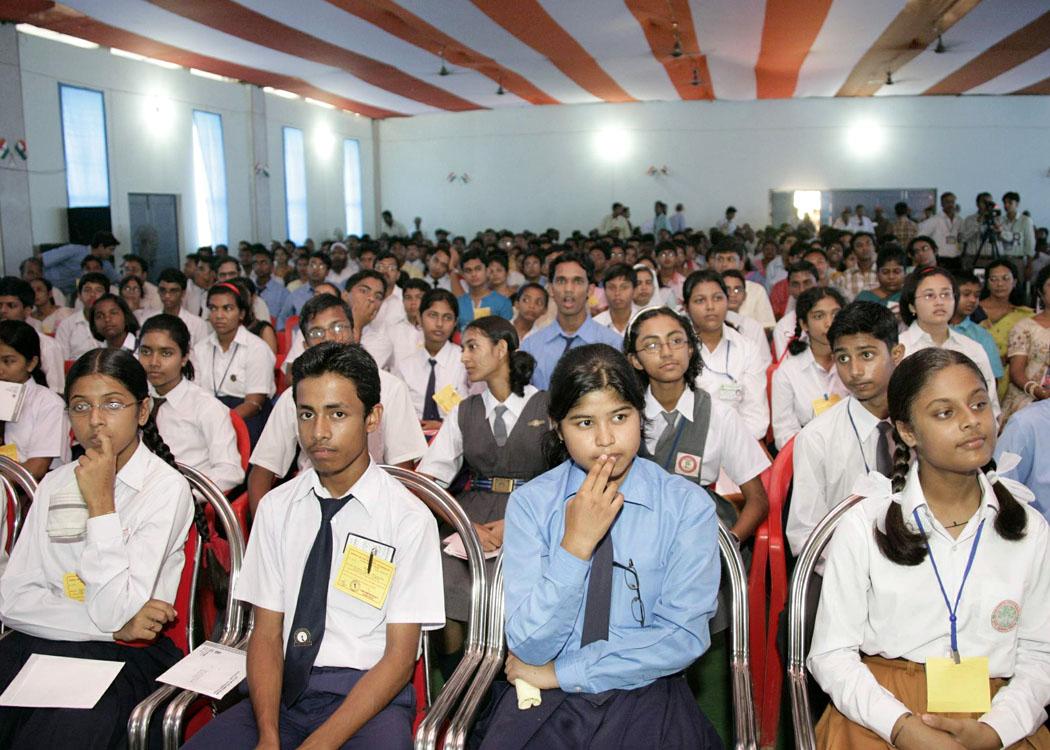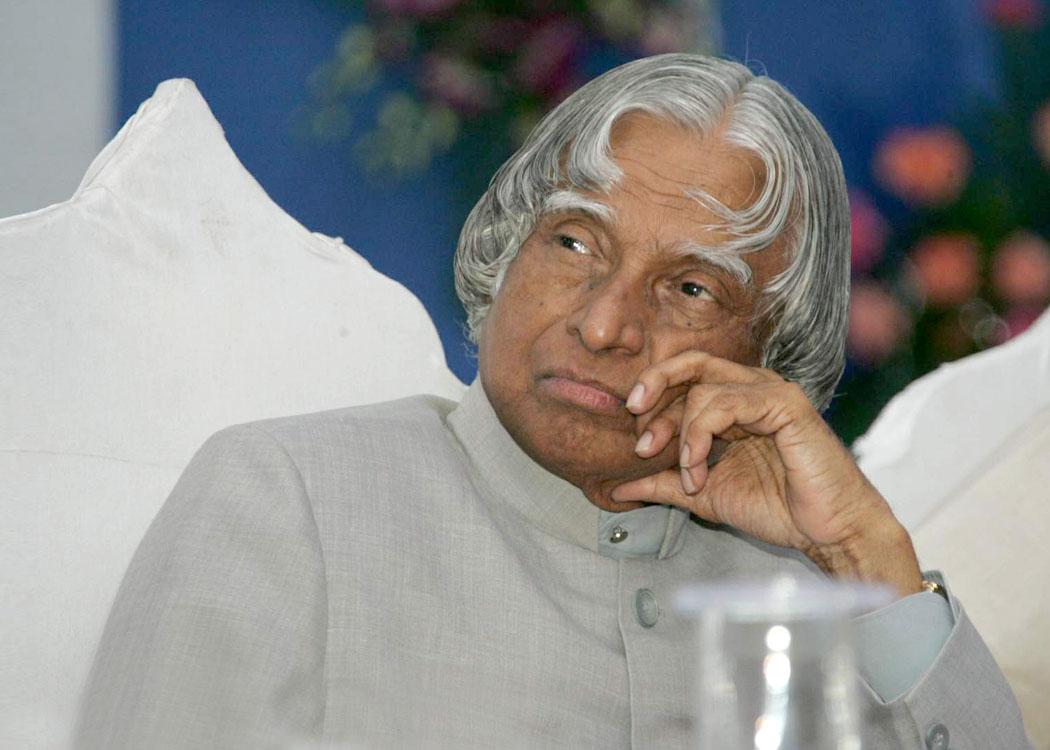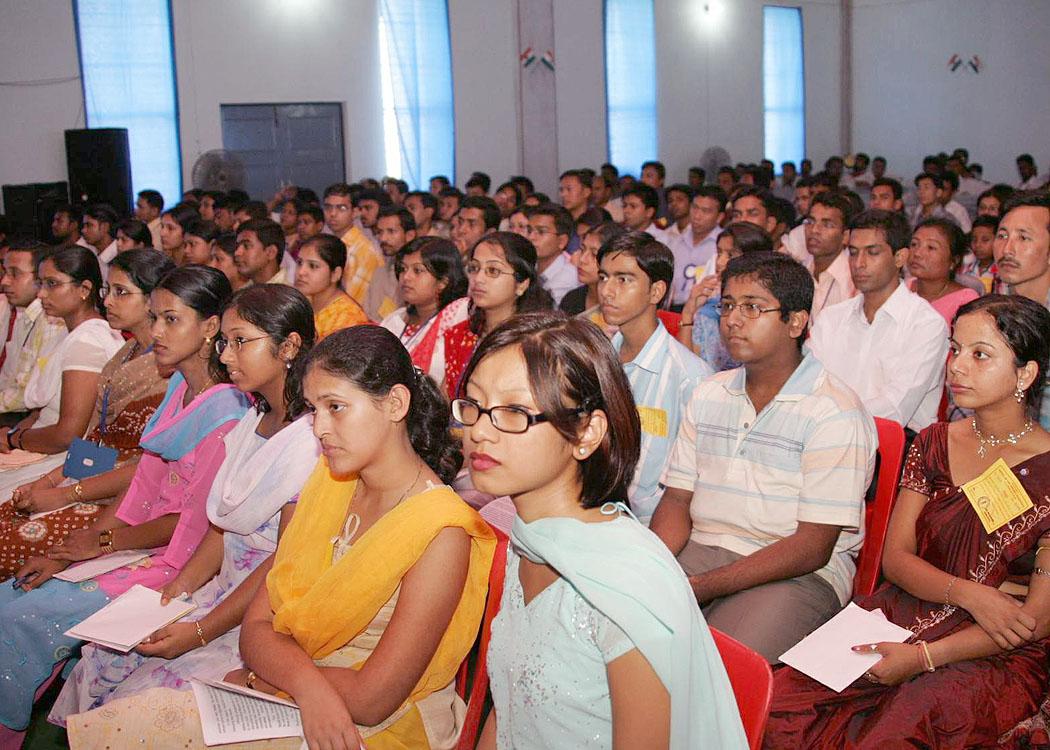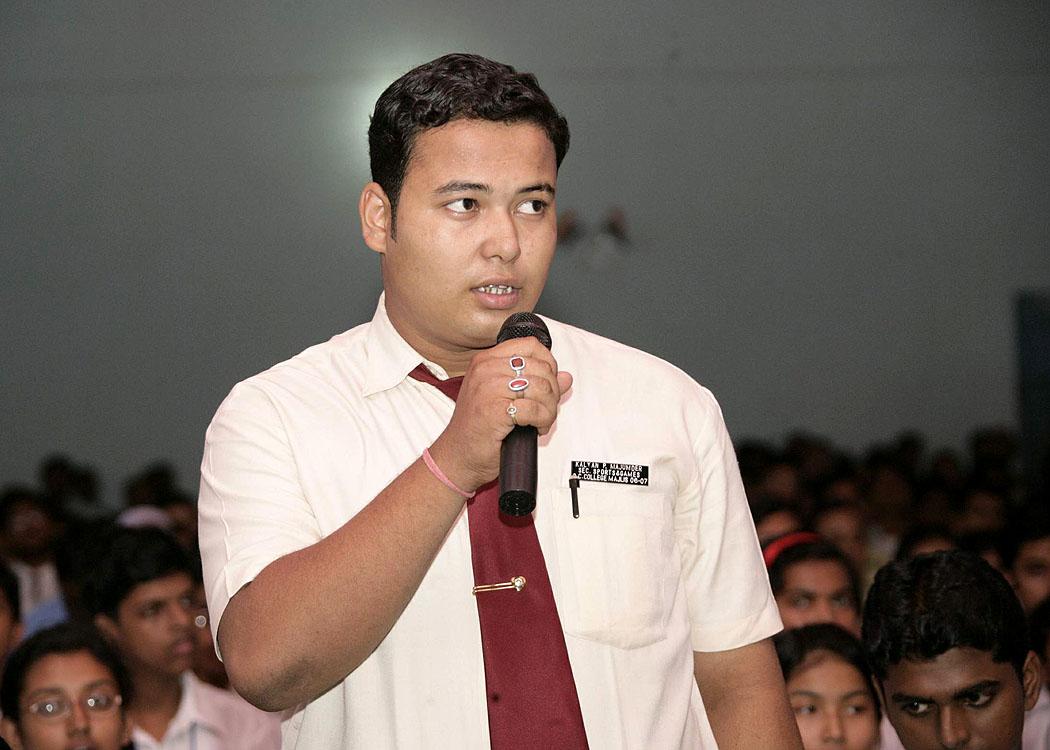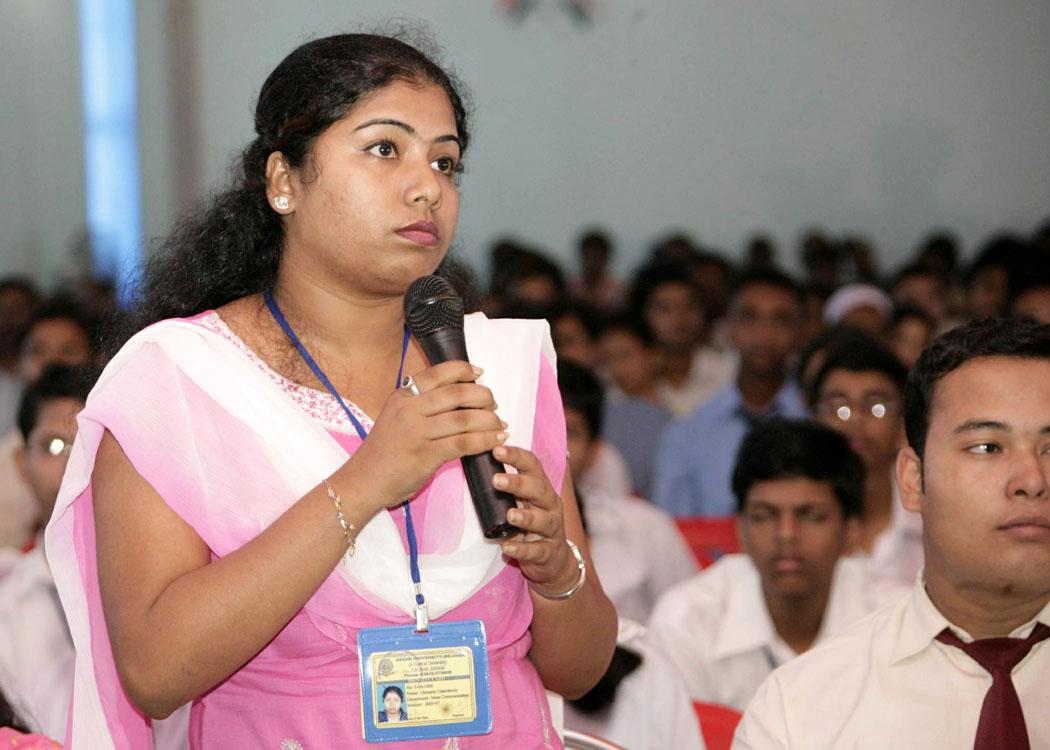Address and Interaction With the Students and Faculty Members of Assam University, Silchar, Assam
Silchar, Assam : 17-10-2006
Creative Leaders
"Inspired minds transcend limitations"
I am indeed delighted to be in the beautiful atmosphere of Silchar and interact with the students and faculty members of Assam University. I greet the Vice Chancellor, faculty members, students and staff of this University. When I am here, I would like to recall the services of the great warrior Lachit Barphukan who is remembered for his victory in the battle of Suraighat, a momentous occasion in Assam?s history.
Leadership from operating core of society
I was thinking what thoughts I can share with the members of Assam University today. I have selected the topic "Creative Leaders". I would like to narrate five examples of leadership which provides an insight into how selfless individuals with expert knowledge and determination to succeed contribute to societal development.
The first one is a story of Shri Shanmugappa who started his career as a porter and today he is an entrepreneur employing over 1,200 people. The second one exemplifies how a lady, socially alienated can become a major social reformer. The third example deals with the contribution made by an industry in promoting societal welfare particularly to the differently abled people of the society, the fourth one deals with an environmental upgradation mission. The fifth example pertains to technology denial management in an important defence programme. Let me highlight the leadership qualities from the operating core of the society.
Success through Hard work and Entrepreneurship
On 20th August 2005, I met Shri G. R. Shanmugappa who is presently Vice-President, All India Motor Transport Congress and President of Karnataka Lorry Owners Association. I would like to share how he faced life and has grown to the present position. In the year 1971, after failing in the 10th class, he moved over to Bangalore where he worked as a Porter in Bangalore Railway Station. In 1972 he joined Sasikala Transport Company and worked there as a labourer for one year. In 1973 he took up a job as labourer in the Brookebond India factory located in Whitefield. During the period 1975 to 1977, he worked in a transport company called Ramani Rangarao of Vijayawada where he was loading and moving coffee trucks to different places in the country.
During this seven year period, with his hard work with devotion in different places he had created a saving of Rs. 4000. With that money he bought an old Van in 1978 and started running the Van with the help of Sri Basavaraj, his brother who was a Driver and he himself became a cleaner. With the savings generated by running the Van he purchased an old Ashok Leyland truck in 1979. From 1980 to 1986 he kept on purchasing one or two trucks per year. All these days he continued his work in Ramani Rangarao Transport Office. In 1986 Shri Shanmugappa purchased one acre of land in Hosur Board and created a shed. He used this shed for blending tea for which he got a contract from Brooke Bond. By 1993 he was blending almost 100 tonnes of tea employing around two hundred and fifty members. In 1996 he started coffee packaging and sold off all the trucks and constructed a 40,000 square feet building in Basavapura village, Hosur Road land which he had purchased in 1986. By 1998 he was blending and packing ten tonnes per day of coffee employing around six hundred labourers. In 1999 he entered into premix coffee business in small quantities of 100 kg or 200 kg per day. Based on that experience he went into production of 10 tonnes per day premix coffee and eight tonnes per day premix tea employing over seven hundred labourers. In 2003 he bought 100 trucks for hiring to certain mines, coffee transportation and sub contracting to Larsen & Toubro, thus he became a fleet owner. In 2004, he converted the trucks as Milk Transporters for the Milk Dairy. In 2005 he visited Australia with his son who is a MBA student for establishing a milk dairy as a joint venture with an Australian firm for handling 9 lakh liters of milk per day. Simultaneously, he has established a factory which produces 100 tonnes of corrugated boxes per month for packaging premix coffee and premix tea. Today, he is employing around 1200 persons for running the trucks and also running premix coffee and tea business. Through this example, we can see how enthusiasm, hard work with devotion and above all the will to succeed made Sanmugappa, a successful entrepreneur, indeed he is a role model for any level of society. On his invitation, I inaugurated the Motor Transportation Congress, of which he had become the Chairman; I was happy and privileged to sit by his side to understand further about his dreams. India needs many Shanmugappa ? like leaders.
From Social alienation to Social Reformer
Last year, I addressed the members of CII Leadership Conclave at Bangalore. There I asked two questions to be answered by every one of the participants. The two questions were (a) What I have learnt so far? (b) What I will be remembered for? I asked the members to correspond with me through email. One of the members in the Conclave was Smt. Asha Ramaiah.
Smt Asha Ramaiah who is presently working as National Advocacy Officer for Indian Network for people living with HIV/AIDS and herself a HIV/AIDS patient since 1995, gave touching answers to both these questions.
As an answer to the first question "What I have learnt so far in my life?", she said,
The true learning in my life began when I had to face the reality of my situation. First, my husband?s family turned me away from their home and later even my father told me to leave our house. I became like any other abandoned woman to face alone my destiny as a fallen leaf would drift with the wind. At the first instance I had to preserve my life and then stand up and face up to the challenges of existence. Thanks to the strength of my womanhood, I could absorb the feeling of shock leading to a realization that my loved ones need support and I am responsible to make efforts to bring change in the lives of other people living with HIV/AIDS in India.
Today with constant efforts that I made, and the support that received from my fellow people living with HIV, I received an acceptance in my community that even people with high positions come to me for an opinion, guidance and counseling on various personal issues. My parents are proud that I have become a role model for others to follow. With a convinced family and a good peer support, I got remarried to another person living with HIV in the year 2000. He has given me ample support to work with my fellow people living with HIV for betterment of our lives.
I learnt when we had to decide upon having a child, how difficult it is for one to make decisions in the face of uncertainties; plunging into the unknown that may have the risk of having a HIV positive child. We decided to follow the medical guidelines to reduce the risk. We came victorious waiting for years when it was confirmed that our child has no infection. We learnt that, dreams do come true but only when you own them and accept the responsibility of any possible risk in pursuing them.
Now we have the responsibility for planning the future of my child for the next 20 years. Our quality life time can be utilized for imparting our parental responsibility by ensuring him education, security and future. I also learnt that I have the responsibility to share the message that all parents living with HIV/AIDS should participate in training programmes and plan their children?s healthy future.
For the second question "What I will be remembered for?" She said,
I will be remembered by the People living with HIV/AIDS of many parts of the country and my family, relatives and associates for the courage I showed, to stand up and face life and for my efforts in sharing the light I have acquired in the midst of my struggle.
Friends, the message we get from the above experience of Smt Asha is that as human beings we may get into a problem. But we should not get defeated. We should find out ways of converting this very problem to our advantage and succeed. The courage we see how the lady defeated the disease and most importantly she withstood the onslaught of alienation from her parents, husband and the society. This I call as indomitable spirit of a HIV affected person. Many Asha Ramaiah are needed to make the people suffering from HIV AIDS, leprosy, polio, cancer and TB feel comfortable and lead a normal productive life in our society.
Enlightened leadership in labour intensive industry
Recently, I participated in the conferment of TERI Corporate Awards 2004-2005. There I presented the award to a food manufacturing industry called Sakthi Masala (P) Ltd among many awards. This Unit produces curry powders, pappad, pickles and other food products. Over the last ten years the company has been actively recruiting disabled people for their establishment and today one third of the employees in the company are differently abled. The company also runs an exclusive project Sakthi Rehabilitation Centre, a home which provides specialized training and physiotherapy especially to children to make them feel confident and allow them to discover their unidentified potentials. Children with cerebral palsy, multiple disabilities and mental retardation are treated free of cost. All the differently abled employees are also given periodic therapy and counseling.
The company uses non-conventional energy resources thereby contributing to the energy independence of the nation. The company gives employment to over 200 rural people especially the destitute, widows and women. The company also ensures that it does not cause air, water and thermal pollution. It has the largest solar drying plant in Asia for drying spices and it has two wind mills which generate 45 lakh units of electricity every year. In addition, the company also runs a free hospital, offers education assistance to the children of its employees, promotes tree plantation and promotes rain water harvesting. What we learn from this Sakthi Masala company is the leadership quality of an enlightened leader, who cares for his people first and foremost and then for his business and profit. When I was talking to him, I felt the great leadership quality radiating from him and he was giving a valuable message to our upcoming industrial leaders of leadership with human values.
Leadership in Environment upgradation
The status of environmental cleanliness is one of the indicators of development of a nation. As a nation, we have to keep our environment clean and tidy including all our places of worship and rivers. I am delighted to learn the Kali Bein rivulet, the place where Gurunanak Devji is said to have received enlightenment. Over the years this rivulet has turned into weed choked drain. Recently river has become clean due to the efforts of Baba Balbir Singh Seechewal in partnership with the Punjab State Government. From the discussions, I understand that he organized people?s participation in stopping the massive flow of sewage into the Bein and cleaned 160 km long polluted and choked rivulet within the last four and a half years by deploying on an average 3000 volunteer pilgrims per day. Today one can feel the flow of fresh water in this rivulet released from the Tarkina Barrage by the government about a year ago. The revival of the rivulet has recharged the water table as the hand pumps that had become dry for the past 4 decades are now pumping out water.
While I was thinking how we should solve the problem of improving the environment of rivers and religious places, I find one of our enlightened citizens has taken the initiative and leadership and demonstrated the power of ignited individuals to solve societal problem. Let this model spread in all the places of divine worship and inspire the pilgrims to participate in the task of clean environment in water and air.
Leadership in Management of Technology denial
In the year 1992, LCA team decided to go for Digital-Fly-by-Wire Control System (FCS) for the Combat Aircraft as it is an unstable aircraft. At that time, the country did not have the experience in developing FCS. The only two countries who had the experience were France and US. The French company (Dassault System) had expertise in Hybrid systems whereas our need was an all Digital-Fly-by-Wire. Hence, it was thought appropriate to have a US partner who has the capability in design, development and integration of FCS on fighter aircraft. There were three candidates, General Electric Control that later became LMCS (now called BAe systems), Lear Astronics and Bendix. Finally, we chose LMCS for the contract at a costs of $ 40 million since they had the experience in designing FCS for F-16 Aircraft. Joint Team for design and development of the FCS was formed with ADE (DRDO Labs) and LMCS. The work share between Indian team and LMCS team was identified. Evolution of the SRS was the joint effort. The prototype flight control computer was to be done by ADE. Total system integration was the joint responsibility. Flight certification was to be provided by LMCS.
The contract progressed till 1998. Then, as you all are aware, India carried out its nuclear test on 11th May 1998. As soon as this event occurred the American Government imposed technological and economic sanction. Due to the sanction, LMCS broke the contract and retained all the Indian equipment, software and the technical information which were in their premises.
This was definitely a shock for the Indian team. Immediately, I called for a meeting of Directors of ADA, NAL, ADE, CAIR, HAL, National Flight Test Centre, Prof I.G. Sharma, a renowned control system specialist, Prof Goshal, a noted digital control system expert and guidance and control specialists from DRDL and ISRO. The FCS team explained to these members the situation arising out of the unilateral termination of contract by LMCS. We had a full day discussion on the methodology, which now needs to be followed, by which we can successfully complete the development of digital fly wire system and fly the LCA. The team after prolonged deliberations gave a structured method by which the development can be completed and the system can be certified for flight trials. They also mentioned that they will support the programme in whatever capacity they have to work with the ADE and ADA teams.
Based on the recommendations of the specialists we immediately strengthened the ADE software team with additional ten experienced software engineers from ADA. ADA was given the responsibility of verification and validation of software. Integrated flight control system review committee was constituted with Director (ADE) as Chairman and PGD (ADA) as Co-chair to support development and resolve all the conflicts arising between Control Law Team, Iron Bird, Software, Hardware and simulation. This team met once a week and brought out all the issues arising in different work centres and solutions were found. In addition, an Iron Bird review team was formed with Project Director Flight Control System as Chairman with members from HAL, ADA, ADE, certification agency (CEMILAC) and Test Pilots from National Flight Test Centre as Members. This team also met every week and resolved all the problems arising in the development and Test on Iron Bird. We also introduced participation of certification agency (CEMILAC) and inspection agency (CRI) in all these reviews. The aim was to see that any problem in any system is brought into focus at the earliest so that the solution can be found. In addition, we made it a point to have a special agenda in the monthly technical committee meeting on the development of integrated flight control system wherein Director (ADE), Director (NAL), Director (National Flight Test Centre), General Manager (HAL) presented the progress and problems. The confidence building took place by intensifying the tests. For example informal Iron Bird test was carried out over thousand hours and the formal Iron Bird test was conducted over hundred and fifty hours. Similarly, Pilot flew the simulator for more than two thousand hours. Thus, what we missed from the foreign partner, we compensated by enhancing the critical design review and increasing the test time to ensure safe man rated design of the integrated flight control system.
The entire team took the denial as a national challenge. They said if it were going to take three years we would do it in two years. If it is going to take twenty million dollars we will do it in ten million dollars. Our working hours was not eight hours. We will work twenty-four hours a day and complete the task. That is the time I realized the power of Indian Scientific Community, and the power of our country to face the challenge. I realized that no country could dominate us by imposing technological sanction or economic sanction. Power of scientific team will defeat the designs of any nation. Today I can proudly say that our scientists have designed, developed, tested, evaluated, integrated the flight control system in the LCA, which has logged more than 500 trouble free flight sorties in four different aircrafts. The challenge of the development is that the aircraft of this class is being designed for the first time; we introduced the state-of-the-art digital fly by wire technology in the very first prototype, of an aerodynamically unstable aircraft. We on our own developed the final hardware and software required for testing and evaluation of the control system in the aircraft, after the foreign partner leaves the scene and our own certification team which had no experience in certifying fly by wire aircraft, gains confidence and certifies the aircraft as flight worthy. Above all, the pilots who have never flown a prototype, which is unstable with a fly by wire system confidently, flew the aircrafts based on their flying experience in the simulator and the Iron Bird. Honest self-assessment, identification of area of uncertainty and all out effort to solve the problem were an important aspect of this programme. This is an example of Integrating leadership, that combined the strength of industry, R&D Labs, Academic, Air Force (the ultimate user) leading the country to achieve, what was then perceived as an impossible task. This is a demonstration of the Indian will that ?We can make the impossible possible.? Now I would like to mention few areas where Assam University, Private industries and NGO?s can work with the Assam Government and Central Government which can hasten the process of development of the state. The entire team took the denial as a national challenge. They said if it were going to take three years we would do it in two years. If it is going to take twenty million dollars we will do it in ten million dollars. Our working hours was not eight hours. We will work twenty-four hours a day and complete the task. That is the time I realized the power of Indian Scientific Community, and the power of our country to face the challenge. I realized that no country could dominate us by imposing technological sanction or economic sanction. Power of scientific team will defeat the designs of any nation. Today I can proudly say that our scientists have designed, developed, tested, evaluated, integrated the flight control system in the LCA, which has logged more than 500 trouble free flight sorties in four different aircrafts. The challenge of the development is that the aircraft of this class is being designed for the first time; we introduced the state-of-the-art digital fly by wire technology in the very first prototype, of an aerodynamically unstable aircraft. We on our own developed the final hardware and software required for testing and evaluation of the control system in the aircraft, after the foreign partner leaves the scene and our own certification team which had no experience in certifying fly by wire aircraft, gains confidence and certifies the aircraft as flight worthy. Above all, the pilots who have never flown a prototype, which is unstable with a fly by wire system confidently, flew the aircrafts based on their flying experience in the simulator and the Iron Bird. Honest self-assessment, identification of area of uncertainty and all out effort to solve the problem were an important aspect of this programme. This is an example of Integrating leadership, that combined the strength of industry, R&D Labs, Academic, Air Force (the ultimate user) leading the country to achieve, what was then perceived as an impossible task. This is a demonstration of the Indian will that ?We can make the impossible possible.? Now I would like to mention few areas where Assam University, Private industries and NGO?s can work with the Assam Government and Central Government which can hasten the process of development of the state.
Suggestions for Infrastructure Development
While I am with you I thought of sharing how Assam University may create a special drive in comprehensively studying and supporting the government infrastructure development programmes which will have multiplier effects for over all development of the States and improve the quality of life of the citizens.
For instance the region is the beautiful place for tourist coming from all over India and the world. To encourage tourism a number of initiatives like improvements of roads, augmenting power generating capacity, accelerating gauge conversion of Railways, increasing air connectivity and creating inland waterways will become necessary.
The University may take the initiative to collaborate with the state govt in establishing the satellite terminal. This connectivity will provide support for education, e-governance and tele-medicine connectivity to different primary health centre to the major hospitals of the State.
As an example urgent attention could be drawn to the following projects:
a) Provision of six lane road connectivity between Silchar Town and Assam University
b) Early implementation of the Tipaimukh project which will benefit in augmenting the power for Assam, Manipur and Mizoram. The Assam University may help Brahmaputra Board in the implementation of the project.
c) The conversion of Lumding ? Silchar Railway Line into broad-gauge from meter-gauge. This type of conversion will enable fast mainstreaming of the North-Eastern States with the rest of the country.
I would suggest the Assam University to work with State and Central implementation agencies of these projects, so that they can provide many economic benefits to the State.
Conclusion
One of the very important ingredients for success of the vision of transforming India into a developed nation by 2020 is the evolution of creative leaders. I am giving a connectivity between developed India, economic prosperity, technology, production, productivity, employee role and management quality, all of which linked to the creative leader. Who is that creative leader? What are the qualities of a creative leader? The creative leadership is exercising the task to change the traditional role from commander to coach, manager to mentor, from director to delegator and from one who demands respect to one who facilitates self-respect. The higher the proportion of creative leaders, leaders with human values, the higher the potential of success of realization of ?developed India by 2020.?
My greetings to all the members of Assam University and my best wishes to all of you in promoting value based quality education to the youth of this region.
May God bless you.
Question and Answer Session
1. Where lies the solution to the present energy crisis in the world?
- Tanuj Kr. Dhar, B.Sc., Karimganj College
Ans: We should progressively reduce the use fossil fuels for our energy requirements. We have to work on solar energy, nuclear energy, wind energy and Hydel systems to a large measure. Simultaneously, we have to conserve energy by designing energy efficient systems. For transportation we have to move towards bio-diesel, bio-fuel and hydrogen.
2. How would you address the conflict between environmental conservation and technological development particularly in relation to livelihood concerns of the poor?
- Kalyan P. Mazumdar, B.Sc., G.C.College, Silchar.
Ans: There is no conflict between technological development and environmental conservation. Every technology must use the technology for upgrading the environment. For example, the bio-fuel is carbon-neutral and it does not inject carbon monoxide in the environment. The green building
3. What is your view on current tendency of the media to influence public opinion through SMS on serious issues?
- Chirasree Chakrabarty, PG 3rd Semester, Department of Mass Communication
Ans: This is one method of participative decision making using the available technology.
4. How can India?s knowledge economy contribute in achieving your Vision 2020?
- Paramita Kar, PG 3rd Semester, Department of Economics
Ans: India is trying to become a knowledge society. The knowledge society enables application of knowledge and innovation into all the sectors of the economy namely agriculture, manufacturing and services sectors. This application is the key to the faster growth of the economy, the results of which we have already started seeing.
5. Despite being rich in bio-diversity and other natural resources what ails the development of North-East India according to your perception?
- Lopamudra Das, Ph.D. Scholar, Department of Life Science, Assam University
Ans: We have to make innovative use of the available bio-diversity and other resources to become nationally and internationally competitive. Competitiveness has three dimensions. One is cost, second is performance and the third is delivery in time. If we can use the sources for making and marketing competitive products we can develop very fast.
6. What is your view regarding the immediate applicability of Hydrogen as a fuel?
- Ms. Nikita Singh, 9th Class, Maharishi Vidyamandir
Ans: During my visit to Iceland, I had a unique experience, which I would like to share with you. Friends, the President of Iceland and myself with our teams were traveling in a hydrogen fuelled bus. The bus also took us to a Hydrogen Fuel station and we filled up Hydrogen gas in the fuel tank and we continued our journey and discussions. I am aware that, hydrogen operated motorcycles, three wheelers and small generators have been developed in the country. In addition, Polymer Electrolyte Membrane Fuel Cell (PEMFC) and Phosphoric Acid Fuel Cell (PAFC) technologies and fuel cell ? battery hybrid van have been developed. Hydrogen production from distillery waste and other renewable methods have also been developed. Hydrogen storage in metal hydrides has also been demonstrated. At present, research is in progress to further improve the performance and technology of these vehicles and generators. Particularly the Fuel cell powered automobiles will become a reality in the world. In India, an electric car company in collaboration with DRDO have developed a hybrid vehicle which can be run with a fuel cell and the cost per kilometer will be just 40 paise in addition to the pollution free operation of the Car. Also, we should know that ISRO launch vehicles use liquid oxygen and hydrogen fuel. Production of liquid hydrogen is being done in Mahendragiri Space Centre. I would urge the research community to concentrate on the areas such as high pressure storage of hydrogen, liquid storage, storage in nano-structure, development of safety codes and standards and development of dedicated engine for hydrogen fuel.
7. You have said that you want to be a teacher after your term as the President is over. Why?
- Anamika Sinha, 12th class, South Point School, Silchar
Ans: I want to be a teacher since I love teaching. Also, while working with young minds, it provides me great opportunity to think and answer difficult question arising from the curiosity of the young.
8. What should a student do to become a successful person like you?
- Master Endow Ayer Mazumder, 10th class, Adhar Chand HS School, Silchar
Ans: Fix a aim. Continuously acquire knowledge. Try to excel in all your action. When you work on difficult missions, you will encounter some problems at times. The problems should not defeat you. You must become the master of the problem and succeed.
9. What is your vision regarding a uniform National Curriculum at the school level?
- Ms. Sharmishtha Patoa, 10th class, Holy Cross School, Silchar
Ans: With the progress in technology, we can definitely have a national curriculum at the school level. The CBSE is attempting to achieve this aim. For enabling quality education to be available in remote areas we have to install number of universal tele-education systems through high band width connectivity.
10. Can India really become a Superpower without solving its huge Unemployment Problem?
- Master Manobesh Nath, 10th class, Silchar Collegiate School, Silchar
Ans:India has a mission of transforming itself into a developed nation by 2020. While doing so, we have to solve the unemployment problem. This problem can be solved only by making our education entrepreneurship oriented so that we generate employment providers rather than employment seekers. In my address to the nation on 15th August 2005, I have dealt with employment generation in our country through missions such as bio-fuel, bamboo, waste land development, water management, converting fly ash into wealth, textiles, healthcare and village knowledge centres. Many State Governments are taking up the implementation of these missions.

